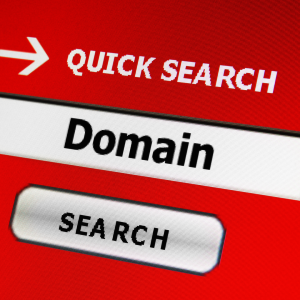
Selling digital products can help you earn money whether you want to augment your existing income or replace it, so you can work for yourself. The key is to take advantage of the low overhead costs associated with selling digital products. One way to keep your costs down is to use public domain images to create products.
I love using content from the public domain because it’s easy to find and the rules for using what you find are simple. In this post, I’ll explain what you need to know about the rules for selling public domain images and give you some pointers on how to get started.
What is the Public Domain?
When an image is in the public domain, in means that it can be used without risk of copyright infringement. There is no person or entity that can claim a copyright for the image and anybody who wants to use it may do so—with some rules that we’ll discuss later.
In the United States, copyright protection is based upon the year that an image was created. Images created after January 1, 1978, are protected for the life of the creator plus 70 years. In the event there are multiple creators, the 70 years begins upon the death of the last surviving creator.
Works that existed but were not copyrighted prior to January 1, 1978, received the same protection as other works: the life of the creator plus 70 years. There are some exceptions based on prior United States copyright laws. You can find the full details in this flyer published by the U.S. Copyright Office, but the main thing you need to know is that the maximum length of post-death copyright protection for works created prior to 1978 is 95 years.
What Are the Cutoff Dates for the Public Domain?
As of 2023, here is a list of cutoff dates for items being in the public domain. On January 1st of 2023, works published or created in 1927 entered the public domain. Here are some other significant dates you should know.
- Works by people who died in 1952 entered the public domain in countries such as the UK, South America, and most of the EU. (Death plus 70 years.)
- Works by people who died in 1972 entered the public domain in countries such as New Zealand and most of Africa and Asia. (Death plus 50 years.)
 If you’re going to use public domain images, it’s your responsibility to check the copyright status. You should know that some living people create images and license them for the public domain. The license should specifically state that the image is in the public domain in these cases.
If you’re going to use public domain images, it’s your responsibility to check the copyright status. You should know that some living people create images and license them for the public domain. The license should specifically state that the image is in the public domain in these cases.
What Are the Rules for Selling Public Domain Images?
Here are the most important guidelines for selling public domain images.
Confirm Public Domain Status
The first and most important rule is that if you intend to sell an image that you believe is in the public domain, it is your responsibility to confirm its public domain status before you use it. Because the laws in the United States are complex, particularly for images created before 1978, you should make sure to double check any image you find before you use it. The consequences of making a mistake could be serious.
Understand Your Rights
The next thing that you’ll need to understand is that when it comes to using a public domain image as it was originally created, you have the right to use the image but you don’t have ownership of it. Nobody owns it and that’s the nature of the public domain. You and anybody else who wants to can sell that image and you have no legal recourse if you use an image as-is and somebody else decides to put it on the same product you did.
Copyright Options
While you cannot copyright an image that’s in the public domain, you can copyright it if you alter it to make it uniquely your own. For example, you could take a vintage photo that’s in the public domain and do the following things to make it yours.
- Edit the image to improve its quality.
- Resize or crop the image.
- Apply filters.
- Add words.
- Change the colors.
If you did any one of these things, you could copyright the resulting image but not the original. After that, you would have the rights to the specific, edited image you created and could prevent somebody else from using it if they tried to do so.
Licensing Issues
A work of art may be in the public domain but an image of it may not be. A case in point is Vincent van Gogh’s The Starry Night, which hangs in the Museum of Modern Art in New York City.
The painting itself is in the public domain. However, MOMA has images of the painting on its website and the museum owns the images, which are not in the public domain. You would need to find an image of the painting that is not protected by copyright to use it in a product you intend to sell.
 Credit the Creator When Necessary
Credit the Creator When Necessary
As noted above, living people sometimes take photographs and license them for the public domain, making them free to use for anybody.
If you find a public domain image with a living creator, the proper thing to do is to credit the creator of the image. You should also follow the rules above about finding a way to make the image uniquely yours, since that will prevent direct competition with the image’s creator and anybody else who might be selling the image.
Don’t Claim Images as Your Own
This last rule might be obvious based on what we’ve already covered, but it bears repeating. Public domain images don’t belong to anybody and that means they can’t belong to you.
You can create unique products using PD images, but you should never claim them as your own work or discredit the original creator.
Earn Money by Selling Public Domain Images
It’s easy to find public domain images and find creative ways to make them unique and earn money selling them. The rules listed here will help you avoid problems and create a steady stream of income from the public domain images you create.
Do you need some guidance selling public domain images? Click here to get my PD Visual Prints guide to help you!



